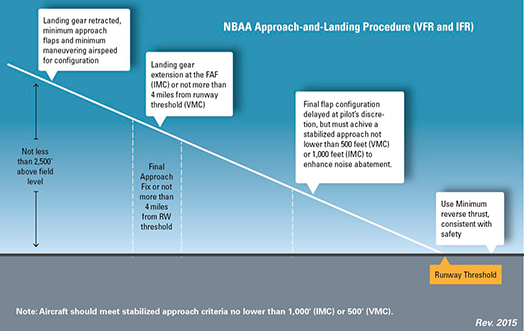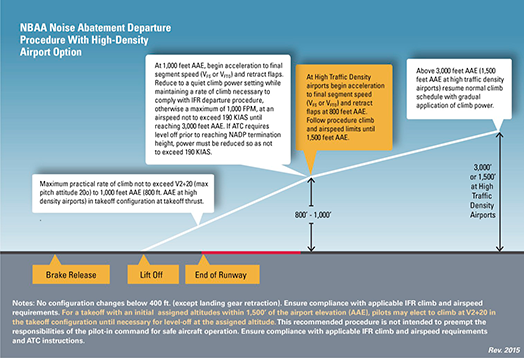Ernest A. Love Field Airport
Prescott, Arizona, United States
Noise Abatement Information - Last update 05/04/2021
Overview
The Airport’s noise abatement program was developed to establish and maintain a partnership between airport and community stakeholders. Our goal is to minimize the effects of flight operations on the surrounding community while ensuring the long-term success of the airport.
Prescott is one of the nation’s busiest airports in terms of total aircraft flight operations. During calendar year 2019, the airport experienced 232,592 aircraft and helicopter operations (takeoffs & landings). This level of activity made Prescott the 5th busiest airport in Arizona and the 45th busiest airport in the nation. Designated by the FAA as a commercial service airport, Prescott is utilized by light aircraft, helicopters, corporate aircraft, commercial airliners, aerial firefighting aircraft, and military aircraft.
The airport’s recommended noise abatement procedures are designed to minimize aircraft and helicopter noise disturbances to homes in the vicinity of the Airport. Compliance with our voluntary noise abatement procedures is extremely important in maintaining goodwill between the airport and the surrounding communities.
Please take a few moments to become familiar with our recommended procedures. The Airport’s noise practices are recommendations only; some may not be advisable for every aircraft in every situation. Flight safety is our #1 priority. NOISE ABATEMENT PRACTICES SHOULD NEVER COMPROMISE SAFETY.
Thank you for your cooperation and for choosing the Prescott Regional Airport – Ernest A. Love Field.
Temporary Information
Arrivals
Runways: 12 & 30 | All Aircraft Categories | Arrival Only
These practices are recommended; some may not be advisable for every aircraft in every situation. Flight safety is our #1 priority. NOISE ABATEMENT PRACTICES SHOULD NEVER COMPROMISE SAFETY.
20’ drop off 300’ from apch end RWY 12.
When Runway 30 is in use – Left traffic for aircraft in closed traffic.
When Runway 12 is in use – Right traffic for aircraft in closed traffic.
Departures
Runways: 03R, 21L & 30 | All Aircraft Categories | Departure Only
These practices are recommended; some may not be advisable for every aircraft in every situation. Flight safety is our #1 priority. NOISE ABATEMENT PRACTICES SHOULD NEVER COMPROMISE SAFETY.
Acft departing RWY 21L continue runway heading until across Highway 89 before making a left turn.
When RWY 30 is in use – Left traffic for aircraft in closed traffic.
When RWY 12 is in use – Right traffic for aircraft in closed traffic.
Departure from Runways 12, 30 and 03R will be discouraged during the following times:
• Monday through Friday prior to 7:00 a.m.
• Weekends and holidays prior to 8:00 a.m
Preferential Runways
All Aircraft Categories | Arrival & Departure
Rwy 21L designated calm wind rwy.
Pattern Altitudes
ALL VALUES ARE MSL (FEET)
All Runways | All Aircraft Categories
TPA for light acft all rwys 6045 (1000 AGL).
TPA for large acft, all turbo prop/jet and high performance acft all rwys 6545 (1500 AGL).
Engine Runup
Please avoid prolonged maintenance run-ups at RWY 3R and 30 before 8:00 AM and after 10:00 PM whenever possible. Please be considerate of the residential areas located adjacent to these runways.
Flight Training
Extensive Fixed Wing and Helicopter Flight Training in the vicinity of Ernest A. Love Field.
Prior Permission (PPR) Operations
Primary Runway 03R/21L and parallel Taxiways C and D have a maximum pavement weight restriction for large aircraft of 63,000 pounds single wheel, 80,000 pounds dual wheel, and 100,000 pounds dual tandem wheel as published in the current FAA Airport/Facility Directory.
Please contact the airport administration office for the Prior Permission Form.
Helicopter Noise Abatement Procedures
Helicopter operators are asked to utilize the Manufacturer’s Recommended Noise Abatement Procedures for the specific helicopter type being operated to/from the airport. (See Link Above)
Airport Contact Info
| Name: | Airport Administration |
|---|---|
| Phone: | 928-777-1114 |
| Noise Hotline: | 928-777-1114 |
| Email: | airport.admin@prescott-az.gov |
| Web Address: | http://www.flyprescott.com |
| Address: | Prescott Regional Airport - Ernest A. Love Field 6546 Crystal Lane Prescott AZ 86301 |
NBAA Procedures
AOPA Noise Awareness Steps
Following are some general guidelines and techniques to minimize the noise impact produced by aircraft operating near the ground.
1. If practical, avoid noise-sensitive areas such as residential areas, open-air assemblies (e.g. sporting events and concerts), and national park areas. Make every effort to fly at or above 2,000 feet over the surface of such areas when overflight cannot be avoided.
2. Consider using a reduced power setting if flight must be low because of cloud cover or overlying controlled airspace or when approaching the airport of destination. Propellers generate more noise than engines; flying with the lowest practical rpm setting will reduce the aircraft's noise level substantially.
3. Perform stalls, spins, and other practice maneuvers over uninhabited terrain.
4. Many airports have established specific noise abatement procedures. Familiarize yourself and comply with these procedures.
5. To contain aircraft noise within airport boundaries, avoid performing engine runups at the ends of runways near housing developments. Instead, select a location for engine runup closer to the center of the field.
6. On takeoff, gain altitude as quickly as possible without compromising safety. Begin takeoffs at the start of a runway, not at an intersection.
7. Retract the landing gear either as soon as a landing straight ahead on the runway can no longer be accomplished or as soon as the aircraft achieves a positive rate of climb. If practical, maintain best-angle-of-climb airspeed until reaching 50 feet or an altitude that provides clearance from terrain or obstacles. Then accelerate to best-rate-of-climb airspeed. If consistent with safety, make the first power reduction at 500 feet.
8. Fly a tight landing pattern to keep noise as close to the airport as possible. Practice descent to the runway at low power settings and with as few power changes as possible.
9. If a VASI or other visual approach guidance system is available, use it. These devices will indicate a safe glidepath and allow a smooth, quiet descent to the runway.
10. If possible, do not adjust the propeller control for flat pitch on the downwind leg; instead, wait until short final. This practice not only provides a quieter approach, but also reduces stress on the engine and propeller governor.
11. Avoid low-level, high-power approaches, which not only create high noise impacts, but also limit options in the event of engine failure.
12. Flying between 11 p.m. and 7 a.m. should be avoided whenever possible. (Most aircraft noise complaints are registered by residents whose sleep has been disturbed by noisy, low-flying aircraft.)
Note: These recommendations are general in nature; some may not be advisable for every aircraft in every situation. No noise reduction procedure should be allowed to compromise safety.
Mandatory Restrictions (None)
None
Curfews (None)
None
Images / Diagrams (None)
None
Preferential Instrument Procedures (None)
None
Reverse Thrust (No Restrictions)
No restrictions
Intersection Takeoffs (No Restrictions)
No restrictions
APU Use (No Restrictions)
No restrictions
Community Groups/Info (None)
None
Stage II (No Restrictions)
No restrictions
Stage III (No Restrictions)
No restrictions
Flight Track Monitoring (None)
None
Noise Ordinance (None)
None
Noise Monitoring (None)
None
Airport Maps
Airport Contact
| Name: | Airport Administration |
|---|---|
| Phone: | 928-777-1114 |
| Noise: | 928-777-1114 |
| Address: |
Prescott Regional Airport - Ernest A. Love Field 6546 Crystal Lane Prescott AZ 86301 |
Weather Data

Loading Most Current Data...
Airport Data
| Elevation: | 5,044 ft |
|---|---|
| City: | Prescott, Arizona, United States |
| Sectional Chart: | Phoenix |
| Flight Service: | Prescott FSS |
| Control Tower: | Yes |
| Wind Indicator: | Yes |
| Fuel: | 100LLA |





